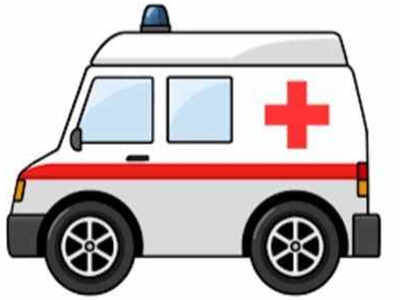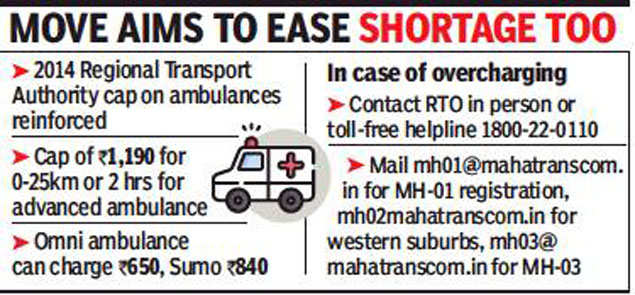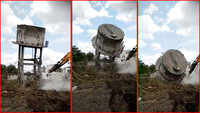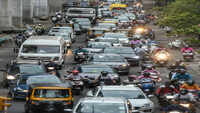
MUMBAI: Three months into the pandemic, the state has come out with an ambulance policy to regulate their charges and address the problem of shortage. Primarily, the policy will empower corporations and district collectors to hire private ambulances at a cost fixed by the Regional Transport Authority (RTA) for Covid patients.
Further, the policy will play the crucial role of reinforcing the price cap on ambulances the RTA had introduced in 2014 but did not implement in letter and spirit. According to the diktat, an advanced ambulance with a life support system cannot charge more than Rs 1,190 for 0 to 25km or two hours and an additional Rs 25 for every extra kilometre. Similarly, an Omni ambulance can charge Rs 650 for the distance and Sumo Rs 840.

Health minister Rajesh Tope told TOI this decision will solve problems faced by several patients. “Civic chiefs and district collectors can make requisitions for private ambulances registered in their region with the RTO. These ambulances will be made available to the public for free and the payment, according to RTA charges, will be made to the ambulance owner by the local body. A detailed notification will be issued on Friday,” said Tope, adding any complaints of overcharging will be dealt with seriously.
While civic officials have said the city has over 650 dedicated ambulances for Covid patients, at the peak of the outbreak, they faced immense hardship to find vehicles to ferry them between hospitals. TOI had reported accounts of people who had to shell out up to Rs 30,000. As thousands of private ambulances went off the roads, the BMC had to convert many feeder buses into ambulances to transport stable patients.
Under the policy that received government approval on Wednesday, local authorities can either go for a package deal complete with driver, fuel and maintenance cost or only take a vehicle on rent and arrange for drivers through public agencies such as MSRTC and BEST. Importantly, the RTA will decide the charges local authorities will pay private ambulance owners.
“It will completely solve the problem of ambulance shortage. They can be deployed from ward-level war rooms and be used to transport patients from home to hospitals,” said Sudhakar Shinde, CEO, State Health Assurance Society, who was instrumental in framing the policy. State authorities have said they should get in touch with the ward-level helplines or 1916 for ambulances, not directly. All ward level offices will have 10-15 ambulances at their disposal.
Further, the policy will play the crucial role of reinforcing the price cap on ambulances the RTA had introduced in 2014 but did not implement in letter and spirit. According to the diktat, an advanced ambulance with a life support system cannot charge more than Rs 1,190 for 0 to 25km or two hours and an additional Rs 25 for every extra kilometre. Similarly, an Omni ambulance can charge Rs 650 for the distance and Sumo Rs 840.

Health minister Rajesh Tope told TOI this decision will solve problems faced by several patients. “Civic chiefs and district collectors can make requisitions for private ambulances registered in their region with the RTO. These ambulances will be made available to the public for free and the payment, according to RTA charges, will be made to the ambulance owner by the local body. A detailed notification will be issued on Friday,” said Tope, adding any complaints of overcharging will be dealt with seriously.
While civic officials have said the city has over 650 dedicated ambulances for Covid patients, at the peak of the outbreak, they faced immense hardship to find vehicles to ferry them between hospitals. TOI had reported accounts of people who had to shell out up to Rs 30,000. As thousands of private ambulances went off the roads, the BMC had to convert many feeder buses into ambulances to transport stable patients.
Under the policy that received government approval on Wednesday, local authorities can either go for a package deal complete with driver, fuel and maintenance cost or only take a vehicle on rent and arrange for drivers through public agencies such as MSRTC and BEST. Importantly, the RTA will decide the charges local authorities will pay private ambulance owners.
“It will completely solve the problem of ambulance shortage. They can be deployed from ward-level war rooms and be used to transport patients from home to hospitals,” said Sudhakar Shinde, CEO, State Health Assurance Society, who was instrumental in framing the policy. State authorities have said they should get in touch with the ward-level helplines or 1916 for ambulances, not directly. All ward level offices will have 10-15 ambulances at their disposal.

Coronavirus outbreak
Trending Topics
LATEST VIDEOS
City
 On cam: Municipal corporation demolishes dilapidated overhead water tank in Gujarat’s Rajkot
On cam: Municipal corporation demolishes dilapidated overhead water tank in Gujarat’s Rajkot  UP: Pregnant woman out to relieve herself in a field gives birth, wild animal takes away newborn
UP: Pregnant woman out to relieve herself in a field gives birth, wild animal takes away newborn  Mumbai: Cop celebrates birthday at NGO office, enquiry ordered after video goes viral
Mumbai: Cop celebrates birthday at NGO office, enquiry ordered after video goes viral  On cam: Social distancing norms flouted in presence of BJP MP at Aligarh station in UP
On cam: Social distancing norms flouted in presence of BJP MP at Aligarh station in UP
More from TOI
Navbharat Times
Featured Today in Travel
Quick Links
Kerala Coronavirus Helpline NumberHaryana Coronavirus Helpline NumberUP Coronavirus Helpline NumberBareilly NewsBhopal NewsCoronavirus in DelhiCoronavirus in HyderabadCoronavirus in IndiaCoronavirus symptomsCoronavirusRajasthan Coronavirus Helpline NumberAditya ThackerayShiv SenaFire in MumbaiAP Coronavirus Helpline NumberArvind KejriwalJammu Kashmir Coronavirus Helpline NumberSrinagar encounter
Get the app





